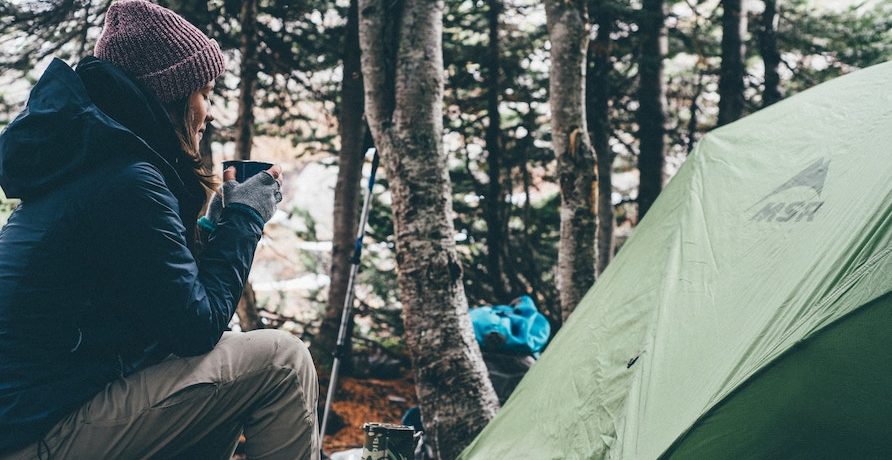Running low on nutrients is not something that you ever want to experience on a hike in nature. Although there are easy cures, your ability to move towards actions decrease drastically as soon as you start running low on energy. You need to be prepared to avoid this scenario happening to you out in nature.
In general, there are 2 ways to deal with the problem. Either you bring nutrients and energy with you on your hike, or you use what’s around you in nature. Passing by some bushes of blueberries, lingonberries or other edible forest berries is a gift from nature. Don’t simply pass by the fruits. The fruits of nature are meant to be eaten by humans and every other animal.
If you happen to find a pine tree with a cut in it, you can eat its sap and pretend that it’s purified maple syrup (that comes from tree sap).
Bears eat loads of berries, honey and fat to survive the winter but you on the other hand don’t need to sleep through the winter, so berries and tree sap will most probably be sufficient unless you’re one of those furry fellas!
My main suggestion for any hiker is to learn about nature and become as self-sufficient as possible. Imagine spending time in the woods without having to bring food, now that’s the essence of life: maintaining survival without technology and other people.
Berries
Edible forest berries are great sources of nutrients and energy. Berries are usually more potent than fruits when it comes to nutrients, that’s a good thing for us hikers.
The berries to look for are the following ones:
Blueberries, lingonberries, raspberries, cranberries, blackberries, currants (black, red and white currants), cloudberries and hawthorn berries.
There might be more variations of berries available in the region where you’re going hiking, so read up on the local nature for the season when you plan to go.
Needle Tea
If you feel low on energy and that your immune system is weak, try a cup of Needle Tea.
Needle tea refers to the needles from a pine tree, which can be boiled in water to get you a shot of vitamin C in the middle of adventure time!
Though it might sound like something British, it’s easy to underestimate vitamins and their effect on us. You need a container to boil the water in, and then you simply add a bunch of pine needles to the water.
If you are going for the exclusive needle cup, add a teaspoon of pine sap for the perfect wooden blend.
Plants
There’s an abundance of plants to eat out in nature. Some grow in valleys, some on mountain cliffs and some in deep forests.
The important thing is to look at the right places and know what’s actually edible. Eating the wrong plant can result in poisoning and/or death if the surrounding factors are working against you.
The seaweed, kelp, fireweed, dandelions, clovers, and chickweed are all plants that you can eat in the wild.
Wherever you go hiking, do some research on the terrain and the nature that surrounds your chosen hiking path. The available edible plants will differ a lot depending on where you go, so make sure to do your homework.
Roots
Roots are slightly harder to discover, yet harder to recognize. You should have some experience before you start looking for edible roots in the wild.
Most edible roots have Latin names and are more unknown to the common hiker than what berries are. Roots are the anchors of plants, buried in the ground where they absorb nutrients and moisture that it gets in touch with.
Finding the right roots can provide excellent nutrition but as mentioned, you need quite a lot of knowledge before you can start locating and recognizing the right from the wrong.
You don’t want to gamble on this one.
In a life-and-death scenario, you don’t care if 1 or 100 bugs accidentally end up in your stomach if you are in need of nutrients.
While bugs taste disgusting, they do provide great nutrition!
However, you should definitely stay away from all sorts of caterpillars, same goes for brightly coloured insects as they can be poisonous.
Before eating bugs and/or insects, you need to cook them as they might contain parasites that can kill you. Also! Remove the legs, head and wings before digging in.
Bring Energy
You don’t need to become a caveman by going on a hike since you can bring whatever food you personally appreciate eating out in nature.
There are no limitations, except for the picking up part. Whatever you enter the forest with, should you also bring out of it. Considering how much we’ve destroyed of the planet and its species, we have a responsibility to maintain forest life and system levels of every sort.
Bring something to eat or snack on if you want to, but also know that you’ll learn nothing about edible plants by doing so.
The more self-sufficient you become, the happier you are. That’s the opinion of the greatest philosophers throughout human history such as Nietzsche and Aristotle.
